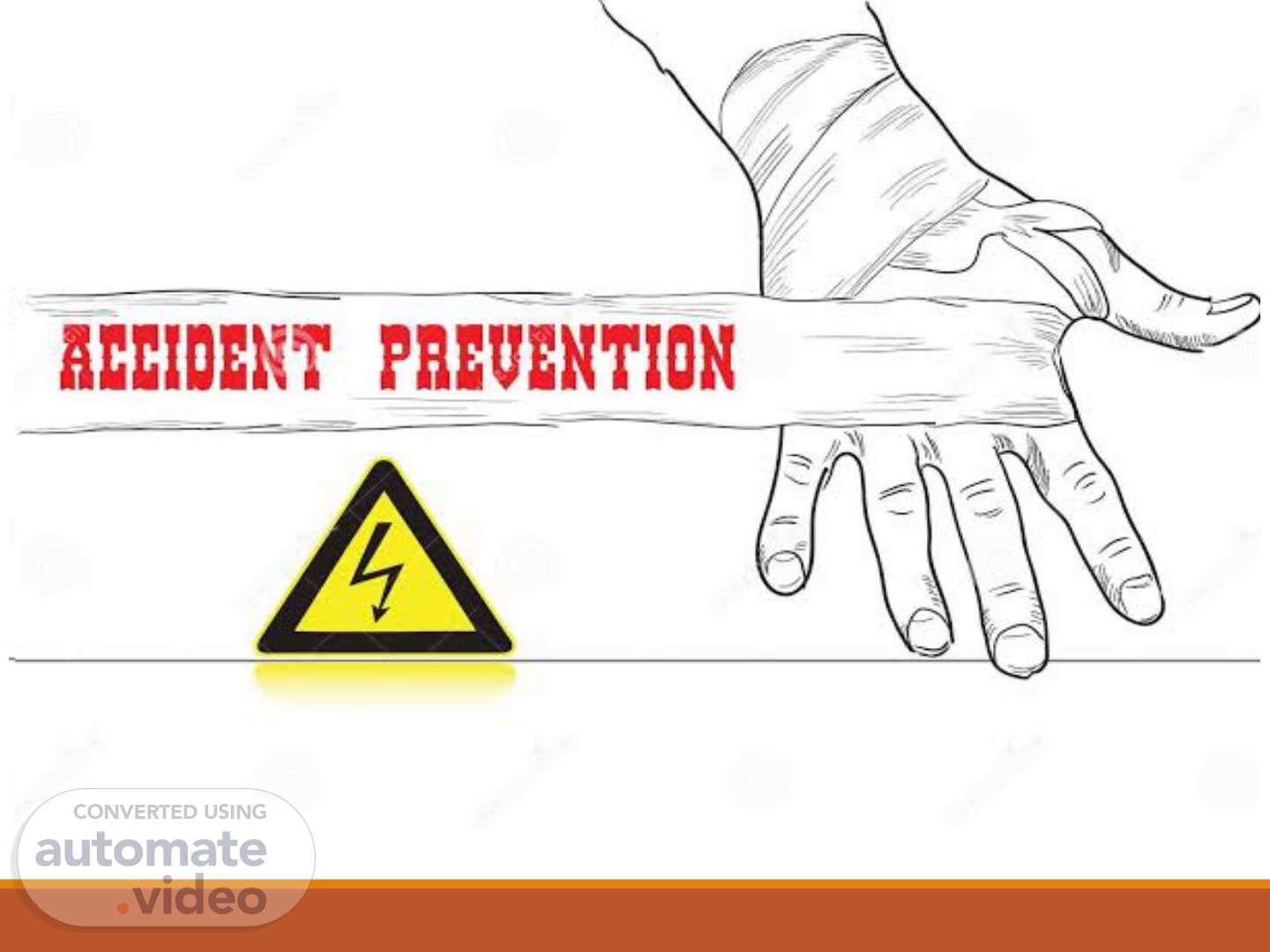
PowerPoint Presentation
Scene 1 (0s)
PREVENTION.
Scene 2 (5s)
TABLE OF CONTENTS 6. ACCIDENT PREVENTION BENEFITS 5. EFFECTIVE MEASURES 4. ACCIDENT REPORTING 3. CLASSIFICATTION OF HAZARDS 2. THEORIES OF ACCIDENTS 1. CAUSES FOR ACCIDENTS.
Scene 3 (17s)
What is Hazard ? A hazard can be anything that can cause harm or damage to people, property, or the environment..
Scene 4 (2m 25s)
The accident triangle, also known as Heinrich's triangle or Bird's triangle, is a theory of industrial accident prevention. It shows a relationship between serious accidents, minor accidents and near misses. For every severe accident (with serious injury/fatality), there were 29 minor accidents and 300 near misses..
Scene 5 (2m 42s)
Dominos theory. If Russia used tactical nukes in Ukraine… - Page 3 - AR15.COM.
Scene 6 (3m 8s)
INTERACTIVE FACTORS IN ACCIDENT PREVENTION. Workers.
Scene 7 (3m 19s)
S NO STATEMENT FINDINGS 1 Do not have separate budget for safety 43% more accidents 2 No training for new hires 52% more accidents 3 No outside sources for safety training 59% more accidents 4 No specific training for supervisors 62% more accidents 5 Do not conduct safety inspections 40% more accidents 6 No written safety program compared with companies that have written programs 106% more accidents 7 No employee safety committees 74% more accidents 8 Did not hold supervisor accountable for safety through merit salary reviews 39% more accidents 9 Top management did not actively promote safety awareness 470% more accidents.
Scene 8 (3m 44s)
Classification of hazards. Physical hazards:. Noise hazards.
Scene 9 (4m 1s)
Shear Hazards. Cutting/Severing Hazards. Stabbing Or Puncture Hazards.
Scene 10 (4m 13s)
Biological hazard:. Blood and bodily fluids. Communicable diseases.
Scene 11 (4m 23s)
Ergonomical hazard:. Physical ergonomics: Work related Musculoskeletal disorder Material handling, working postures Cognitive ergonomics: Mental workload, computer interaction, etc., Organizational ergonomics: Work time, team work, communication. Etc.,.
Scene 12 (4m 38s)
Hazard Reporting The primary objective of hazard reporting is to spot these issues before they result in injury, illness, or damage, allowing employers and employees to take preventive action and foster a safer work environment. Sound reasons for reporting All Accidents You learn nothing from unreported accidents Accident causes go uncorrected Infection and injury aggravations can result Failure to report injuries tends to spread and become accepted practice. Preventing Recurrence.
Scene 13 (5m 16s)
Effective measures. HIRA – Hazard identification & risk assessment.
Scene 14 (5m 29s)
Fire exit Keep clear. Clear access. auna-3)0Hd 9N11V83dO dOS auvatqus.
Scene 15 (5m 40s)
ACCIDENT PREVENTION BENEFITS. You can expect many benefits from preventing occupational accidents/incidents Some of the benefits you might expect are Reduced industrial insurance premium costs Reduced indirect costs of accidents Fewer compliance inspections and penalties Avoidance of adverse publicity from deaths or major accidents Reduced pain and suffering by injured workers Reduced long-term or permanent disability cases Improved morale and loyalty from individual workers Increased productivity from workers.
Scene 16 (5m 59s)
Kindly scan the below QR code to take the online assessment..
Scene 17 (6m 8s)
THINK.